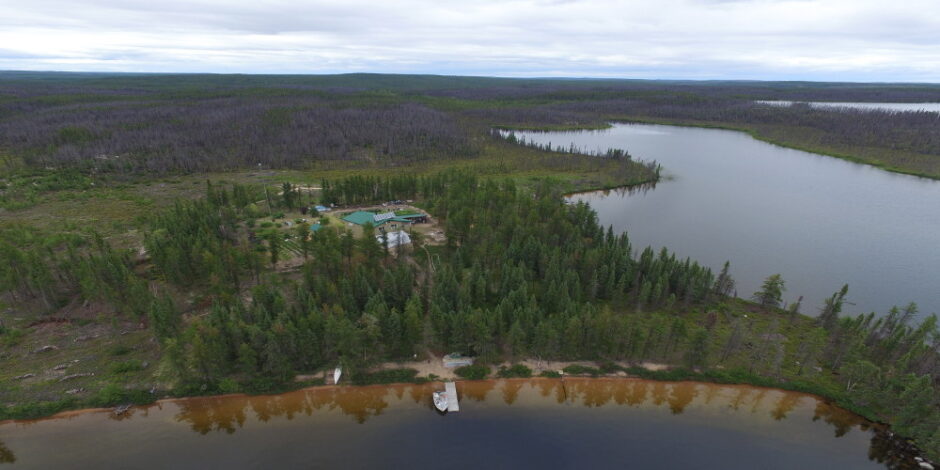Whether you’re a backyard gardener, a homesteader or someone contemplating joining the ranks of those desiring to be more self-sufficient, we’re all busy and are looking for ways to save time and effort. Raising perennials is the answer. Why not grow more perennials and save labor?

Grapes with Vines Behind Ron
What are Perennials?
Perennials are plants that once established, will come up faithfully every year with little or no help from any of us. While they require some effort to get established at planting time, that time and energy expenditure is a one time item. As a result, they are a gardener’s best friend because for that initial investment of time and effort, you are rewarded with years of productivity.
While perennials do need some care and maintenance through the growing season (pruning, weeding, fertilizing, mulching, watering etc) they do not have to be planted each and every year. Spring is always a busy time so anything that cuts down on planting time is a boon. Perennials are a lifesaver. Growing perennials means time and labor saved.
Countless perennials are available to the gardener and/or homesteader. They include perennial vegetables, perennial fruits as well as perennial herbs.
Perennial Vegetables
Perennial vegetables we grow include asparagus and rhubarb. Yes rhubarb is botanically a vegetable.

Asparagus
We love asparagus. We grow lots of it…3 rows 75feet long. We eat it every day while it’s in season. To establish a patch, most people plant 1 year old crowns, but it can also be started from seeds. Our patch is a combo of both purchased 1 year old crowns and plants we grew from seeds. While it takes at least 2 full seasons before the first harvest to allow the plants to get established, the wait is worth it and as I’ve said before, once the initial planting is done, you never have to plant again yet can expect up to 25 years of productivity. Talk about a labor saver.

Rhubarb
Rhubarb is a hardy perennial that is a harbinger of spring as it’s one of the first things to show signs of life and is one of the very earliest items that is ready to harvest each season. For info on how we grow rhubarb see this post.
We use rhubarb in lots of ways but our favorite is juice.
Perennial Fruits
Perennial fruits we grow on our homestead include not just fruit trees (apples, pears and plums) but also what’s commonly referred to as the small fruits.

Apples Ready to Harvest
Small fruits we raise include red, black and white currants, gooseberries, cherry bushes, raspberries, blackberries, blueberries and grapes. In the past we’ve also raised saskatoons, sometimes called Juneberries as well as cherry plums and elderberries. Small fruits are generally easier to get established than fruit trees and will begin bearing fruit in less time than trees, a couple of years as opposed to many years. Usually they are less expensive to purchase than trees too.

Red Currants

Black Currants

Raspberries

Blueberry Bush with Unripe Fruit
Once again some effort is required to prepare the soil and plant these perennial fruits but once established they will produce for years to come. Yet one more example of saving labor.
Hardiness is a quality many of these small perennial fruits possess. Currants, gooseberries, raspberries, Saskatoons and cherry plums all grew in zone 0 of northern Saskatchewan where we routinely had winter temperatures of -40F. In fact the rhubarb and black currants were so tough they started to come back to life when night temps of early spring still dipped below freezing. Green buds always showed up on the black currant when snow was still on the ground.
Perennial Herbs
Finally let’s not forget about perennial herbs. There are many. They can be culinary or medicinal in nature. Chives, oregano, mint, lemon balm, thyme, sage, anise hyssop and comfrey are some of the perennial herbs we grow.

Thyme
Putting it All Together
In summary, other than the initial planting, perennials require no planting each and every year, yet will reward you with years of productivity. This translates to time and labor saved which is particularly relevant during the busy spring season. Simply keep them weeded, watered, fertilized, mulched and pruned, which by the way, pruning should be done when the plants are dormant in late winter. How fortunate that pruning time coincides with a slower time of the year when the workload is less….late winter. Another example of how labor saving raising perennials can be.
And finally harvest your bounty when ready. You’ll be astounded by the quantity and variety of food perennials can contribute to your diet and overall plan for self-reliance. Why not grow more perennials and save labor?
Until next time, keep the dream alive! We wish you a great day!
Ron and Johanna
If you found our site and this post of value, would you please click the “Top Prepper Sites” link in the right hand column to vote for us. Thank you so much!
Please subscribe to our blog if you would like email notification of new posts.
